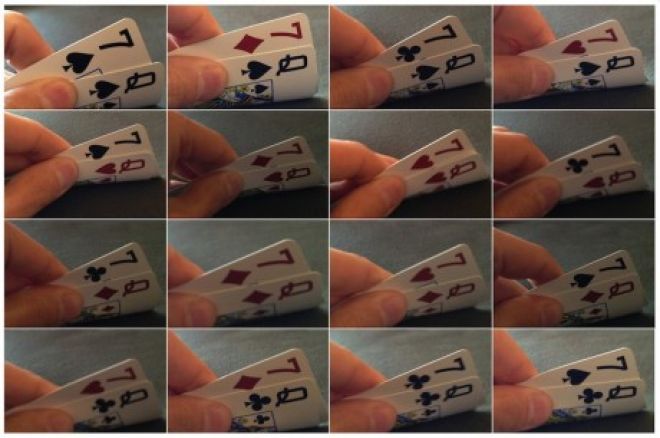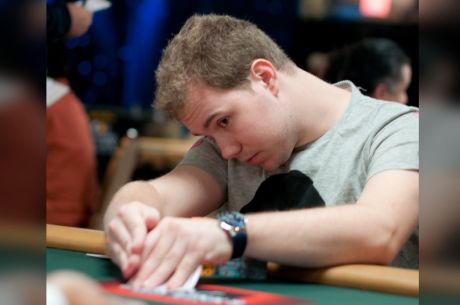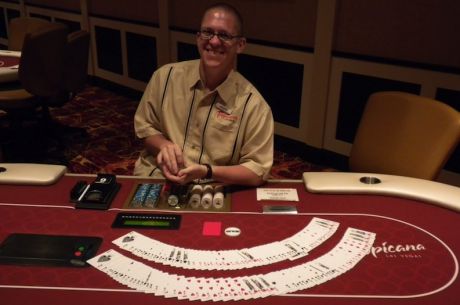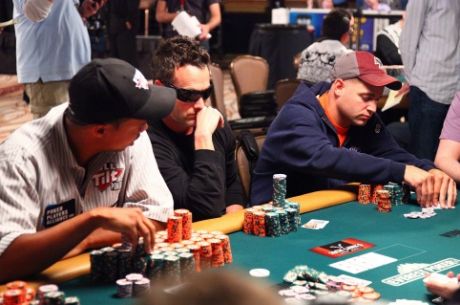What Did I Have? Remembering Hole Cards in Hold’em

Texas hold’em is sometimes called a “partial information game” because while the community cards and all betting action is plain for every one to see, each player’s two hole cards are known only to him or her. Knowing what two cards you have have been dealt is the only informational advantage you are guaranteed to have every single hand.
But what if you forget what those two cards are?
Hold’em doesn’t present the challenge to memory that other games do. For instance, in Omaha you’re dealt four cards, which can sometimes be tricky to retain after a single glance. And in seven-card stud being able to remember which up cards were dealt to players who have folded is highly recommended — but also not so easy (for most of us).
But we’re talking about trying to remember just two cards. Surely that shouldn’t be too difficult, should it?
Well, even the best hold’em players sometimes have trouble remembering their hole cards. Even Phil Ivey!
Who Could Forget the Time Ivey Forgot?
Back in 2009, Ivey made a deep run in the World Series of Poker Main Event, reaching the final table and ultimately finishing seventh. Along the way a hand arose with 24 players left that saw Ivey open with a minimum-raise from under the gun with 8♠8♦. The table folded around to Jordan Smith in the big blind who reraised with A♦9♣, and Ivey called.
Both players ended up checking all three postflop streets as the board came 5♠Q♥10♠, then Q♠, then A♠. At the showdown, Smith said “ace” and turned over his hand to show he’d made a pair on the river.
However, that same river card gave Ivey a flush, putting a fourth spade on the board to go with the 8♠ in his hand. But instead of showing his cards and being awarded the pot, Ivey mucked!
Don’t believe me? Take a look:
In the commentary, Norman Chad makes a reference to the “Big Game.” A while back in “Preparing for a Poker Tournament? Follow These Five Steps,” Rich Ryan referred to Ivey’s 2009 WSOP Main Event run and how he was spending every waking hour away from the tournament playing in a high-stakes game at Bobby’s Room at the Bellagio.
“I am barring Phil from the Big Game for 30 days,” cracks Chad, deciding that fatigue was a likely explanation Ivey’s mistake. “Phil, you misread your hand!” he repeats afterward. “How could you misread your hand?!?"
Most of us watching that hand play out on ESPN found it almost heartening to see a top-level player like Ivey show that he sometimes makes mistakes, too. In a clip shown later during the Main Event final table, Ivey spoke about the hand good-naturedly, chuckling at how he’d never looked back at his hand once and had simply forgotten one of his eights was the spade.
“I learned from it,” he adds with a smile. “I look back at my hand now a couple of times, especially before I throw my hand in.”
It’s Okay to Look Back
We can learn as well from Ivey’s mistake, likewise always making it a practice to look back at our cards before mucking them and conceding a pot. Indeed, there’s nothing wrong with looking back at your hand at any point to reconfirm to yourself what you have.
Of course, constantly looking back at your hand could potentially mark you as a “newbie” at the table, something most of us don’t necessarily want to have happen. In some situations doing so can constitute a fairly obvious tell, too.
Very often when a flop brings three of the same suit, or if the turn puts a third card of the same suit on the board (as in the Ivey-Smith hand), players will recheck their cards to remind themselves if they have that suit in their hands. Doing so often signals to the table that you at least have two unsuited cards in your hand, and that you probably weren’t thinking too much about making a flush with your hand until that moment.
Generally speaking, players who have been dealt a suited hand never have to remind themselves what suit their cards are — seeing two hearts or two spades or whatever lodges in the mind pretty stubbornly. But when the hands are unsuited, remembering which two suits you have sometimes doesn’t quite stick.
Remembering Suits
One of my favorite strategy books, Advanced Limit Hold’em Strategy by the late Barry Tanenbaum, includes a short discussion about remembering hole cards that includes a mnemonic device for avoiding this “look-back-to-see-what-suits-you-have tell” (as Tanenbaum calls it).
He points out how with unsuited hands you have six possible combinations when it comes to the two suits, and he offers a little memory trick for remembering all six:
- clubs and spades — black
- diamonds and hearts — red
- clubs and diamonds — low (first in alphabetical order)
- hearts and spades — high (last in alphabetical order)
- clubs and hearts — round (tops of the pips)
- diamonds and spades — pointed (tops of the pips)
Remembering that your hand is “all black” or “all red” is simple enough. Looking at one club and one heart and thinking “round” to yourself (referring to the rounded look of the symbols) is not hard either, nor is doing the same with the “pointed” diamonds and spades.

Meanwhile, in other card games in which suits are ranked (not the case in hold’em), the ranking goes from spades (highest) down to hearts, then diamonds, then clubs (lowest). The sequence happens to follow reverse ABC order, thus the earlier in the alphabet, the lower the rank of the suit. That, too, can work as a way to remember you have “low” suits (a club and a diamond) or “high” suits (a heart and a spade).
Remembering Ranks
While suits escape us sometimes, the ranks of our hole cards usually do not as numbers and the face cards stay with us more readily as we look down and see “ace-five” or “queen-eight” or “seven-deuce.”
I’ve seen others pass along all sorts of advice when it comes to remembering ranks, sometimes making reference to all of the many hold’em hand nicknames as part of their recommendations (e.g., Jx5x is the “Jackson Five,” 9x5x is the “Dolly Parton,” and so on). Probably not the most practical advice, in truth.
For me, I generally go with a much simpler strategy of thinking to myself what my hand sounds like if I were to say it out loud. That is, I’ll look down at Q♣10♦ and “say” to myself “queen of clubs, ten of diamonds,” often more than once.
That works for me, and in fact tends to make Tanenbaum’s trick for remembering suits less needful, although his idea does work. Silently “saying” my hand to myself also helps me remember which card is which, suit-wise, which can matter sometimes, too (e.g., when drawing to a flush with Ax6x, it is obviously relevant to know if you have the ace or the six of the needed suit.) Perhaps this method might work for you — just don’t say your hand out loud!
Of course, when all else fails take Ivey’s advice to himself and do simply look back at your cards. Better to be thought a newbie than to muck the winning hand!
Get all the latest PokerNews updates on your social media outlets. Follow us on Twitter and find us on both Facebook and Google+!








